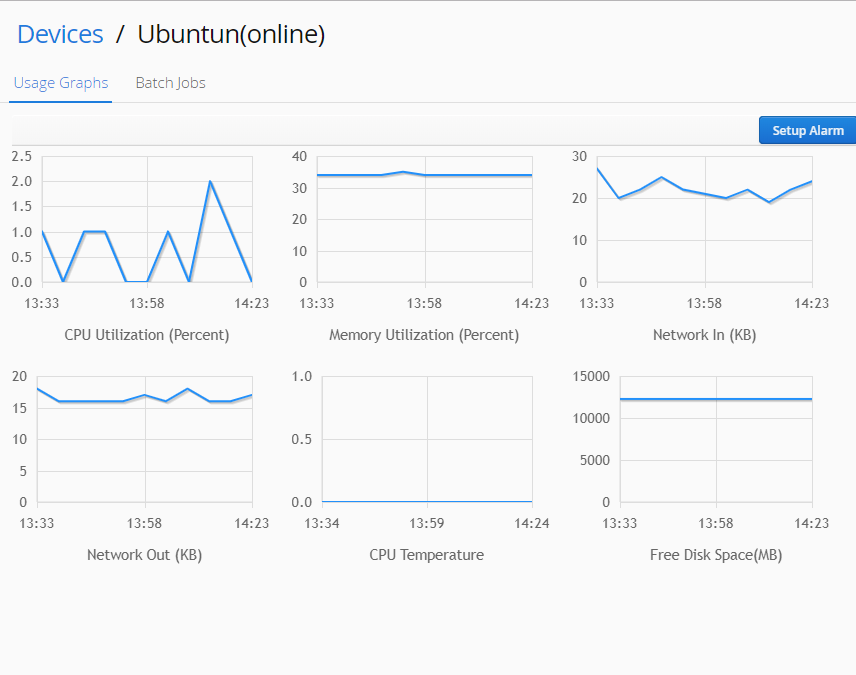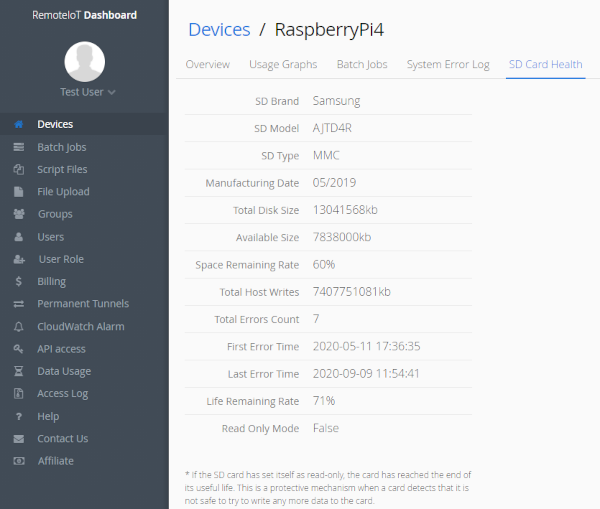
Controlling assigned microcomputer from afar proves to be notably practical, still the process furthermore brings hidden preservation threats. To lower mentioned problems, executing proper security layers and knowing how Network Address Translation (NAT) runs is vital. A firewall acts as a buffer between your Pi and the outside world, allowing you to direct incoming and outgoing traffic based on predefined rules. By tailoring your firewall to only allow trusted connections, you can significantly increase the security of your device.
NAT gateways are another essential element in remote access security. They distribute private IP addresses to devices within your network and present a single public IP address to the outside world. This process helps to protect the internal network structure, making it more difficult for attackers to pinpoint individual devices. By applying both firewalls and NAT routers, you can create a secure and robust remote access solution for your Raspberry Pi.
Connecting IoT Devices from Far and Wide the Firewall
The sphere of Internet of Things (IoT) offers unmatched opportunities for operation, but it also brings unique issues. One key concern is securely logging into these devices from offsite locations. Traditional firewalls, designed to protect frameworks from external threats, often restrict access to IoT endpoints, reducing the full potential of connected apparatus. To conquer this difficulty, innovative measures are emerging.
- Cloud-based platforms allow for secure access to IoT devices, enabling users to manage them from anywhere with an internet access.
- Private Connection tools create a exclusive tunnel between the user's device and the IoT network, safeguarding data during transfer.
- Advanced Security protocols enforce strict access controls, validating the identity of users before granting them access to specific devices.
By embracing these technologies, organizations can exploit the full benefits of IoT while ensuring the protection of their valuable data and systems.
Bridging the Gap: Remotely to Raspberry Pis Behind Network Address Translation (NAT)
Network Address Translation (NAT) can sometimes pose a hurdle when trying to interface with your Raspberry Pi from outside your local network. While NAT effectively masks private IP addresses, it can make direct connections difficult. Fortunately, there are several solutions to bridge this gap and enable seamless remote access to your Raspberry Pis.
- One common approach is to utilize a Dynamic DNS service, which provides a fixed hostname for your Pi that updates automatically even when its IP address changes.
- Another option is to set up port forwarding on your router, allowing specific ports on your Raspberry Pi to be allocated to public IP addresses. This method requires careful configuration and understanding of network protocols.
- For more secure access, consider implementing a VPN (Virtual Private Network). A VPN encrypts your connection and routes it through a reliable server, masking your real IP address and providing an extra layer of protection.
By exploring these strategies and selecting the most appropriate solution for your needs, you can effectively bridge the gap created by NAT and gain reliable remote access to your Raspberry Pis, unlocking their full potential from anywhere with an internet connection.
Secured Remote Control Over Firewalled IoT Devices
Remote access to IoT devices sometimes be a challenge when met by firewalls. These security measures intended to protect your network can sometimes block your ability to control your networked devices from afar. However, familiarizing yourself with the principles behind firewall operation and implementing customized configurations can open a secure pathway for remote supervision.
One typical approach is to assemble port forwarding rules. This necessitates redirecting specific IP addresses and ports to your IoT device, effectively constructing a direct connection. Another method relies on VPNs (Virtual Private Networks). By setting up a secure tunnel between your device and the network where your IoT device resides, you can override firewall restrictions and gain access to your devices remotely. It's imperative to remember that implementing these solutions calls for a thorough understanding of your network infrastructure and security protocols to copyright the integrity and safety of your system.
- Employ strong passwords for your router and IoT devices.
- Repeatedly update firmware on your router and IoT devices to resolve security vulnerabilities.
- Block any unnecessary services or ports on your router.
Accessing Firewalls for Remote Raspberry Pi Management
Remotely administering your Raspberry Pi may be a powerful way to leverage its capabilities. However, firewalls are crucial for protecting the security of your device. Properly deploying firewall rules allows you to regulate incoming and outgoing network traffic, impeding unauthorized interfaces. Understanding how to handle these settings is essential for safeguarding the integrity of your Raspberry Pi.
- Implement a firewall software solution designed for Raspberry Pi. Numerous varieties are available, each with its own set of qualities.
- Define clear rules that outline which ports should be open and which should remain locked.
- Evaluate the use of a VPN for an extra layer of defense when utilizing remotely.
Don't forget that firewall configurations are designed to be fine-tuned to your specific needs.
Comprehensive Guide to IoT Remote Access and NAT
Effectively regulating your Internet of Things (IoT) devices from a remote location presents unique challenges. NAT (Network Address Translation), commonly used in home and small office networks, can complicate this process. This guide will delve into the essential steps to securely access and configure your IoT devices behind a NAT firewall.
- ,To begin with, establish a secure connection between your remote device and your local network using a reliable VPN protocol like OpenVPN or WireGuard.
- ,Furthermore, configure port forwarding rules on your router to allow incoming connections to the specific ports used by your IoT devices. Ensure you only forward traffic to the required ports and use strong passwords for authentication.
- Lastly, consider implementing multi-factor authentication (MFA) for added security when accessing your IoT devices remotely. MFA adds an extra layer of protection by requiring multiple forms of verification, such as a password and a unique code sent to your phone.
By observing these best practices, you can safely and securely direct your IoT devices from anywhere with an internet connection.
Defending Remote Access to Your Raspberry Pi
Wishing to access your Raspberry Pi offsite? A firewall is essential for safely enabling remote access. It acts as a gatekeeper, blocking unauthorized access while allowing whitelisted requests through. By implementing proper firewall configurations, you can ensure your Pi remains secure even when accessed remotely.
Begin by identifying the services you need to expose externally. VNC are common examples. Configure your firewall to open inbound data transfers on the specific ports used by these services. Remember, a well-configured firewall will only open the necessary doors, curbing potential vulnerabilities.
- Leverage a robust firewall software package designed for Raspberry Pi, such as UFW or iptables.
- Set up strong passwords for your remote access accounts.
- Continuously review and update your firewall rules to address any changes in your configuration.
Obtain Remotely to Raspberry Pis Through Firewalls and NAT Routers
Securing your Raspberry Pi within a network environment often involves traversing firewalls and Network Address Translation (NAT) routers. This can seem daunting at the outset, but understanding these components is crucial for safely connecting to your device from afar. This guide provides an in-depth walkthrough of common tactics for remote access, empowering you to handle with your Raspberry Pi effectively regardless of its physical location.
We'll delve into the fundamentals of firewalls and NAT, outlining their roles in network security. Then, we'll explore various strategies for establishing secure connections, including SSH tunneling, VPNs, and port forwarding. Furthermore, we'll provide practical steps and examples to help you implement these techniques on your own setup.
By mastering the art of remote access, you can unlock a world of possibilities for your Raspberry Pi projects, enabling you to monitor performance, analyze issues, and even control your devices remotely.
Reliable Remote Access for Your Raspberry Pi
Planning to log into your Raspberry Pi from afar? Follow these instructions to set up secure remote access. First, establish a suitable protocol like SSH or VNC. Next, deploy the necessary software on your Pi. Build a strong password and enable two-factor authentication for added security. Then, forward the required ports on your router to your Pi's IP address. Finally, test your connection from a remote device.
- Leverage firewalls to protect your Raspberry Pi.
- Maintain your software up-to-date to patch vulnerabilities.
- Observe your system logs for suspicious activity.
From Home Network to the World: Remotely Controlling Your Raspberry Pi Across Firewalls
Your Raspberry Pi can be much more than just a local project. With the right setup, you can control it from anywhere in the world, regardless of firewalls or distance. This opens up a universe of possibilities - managing your home automation, accessing data remotely, or even running online services directly from your Pi.
While this may seem daunting at first, setting up remote access for your Raspberry Pi is surprisingly straightforward. You'll need to configure your network settings, set up a secure connection, and choose the right tools for controlling your device remotely. Here are some key steps to get you started:
* First, ensure your home network is configured properly. This includes setting up port forwarding rules to allow access to your Pi from outside your local network.* Next, choose a secure connection protocol like SSH or VPN. These protocols encrypt your communications and protect your data from hacking.* Finally, select a remote control tool that suits your needs. Popular options include VNC for graphical access, SSH clients for text-based interaction, and cloud-based platforms for simplified management.
Once you've taken these steps, you can enjoy the freedom of controlling your Raspberry Pi from anywhere with an internet connection. This opens up a world of possibilities for learning, experimenting, and building creative projects.
Manipulating IoT Devices Beyond the Local Network: Firewalls and NAT
Extending the reach of Internet of Things (IoT) devices away from the confines of your local network requires careful consideration of security mechanisms. Firewalls serve as crucial watchdogs, meticulously scrutinizing incoming and outgoing traffic to thwart potential threats. Network Address Translation (NAT), on the other hand, allows multiple devices on a private network to share a single public IP address, strengthening network efficiency and hiding internal endpoints.
By implementing robust firewall configurations and employing NAT effectively, you can create a secure and organized environment for your IoT ecosystem to thrive. This combination of approaches ensures that your devices can securely communicate with the wider internet while being protected from malicious actors.
- Integrate comprehensive firewall rules to allow only trusted traffic.
- Use NAT to mask internal device addresses.
- Watch network activity for any suspicious behavior.
